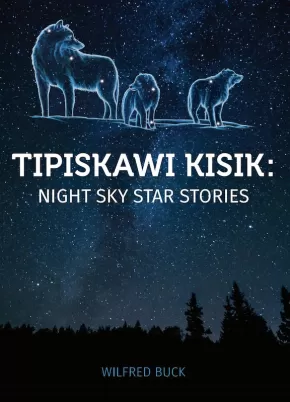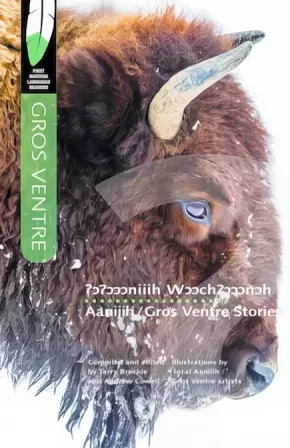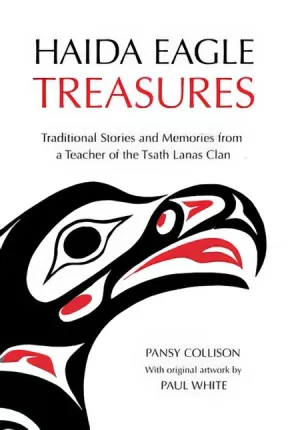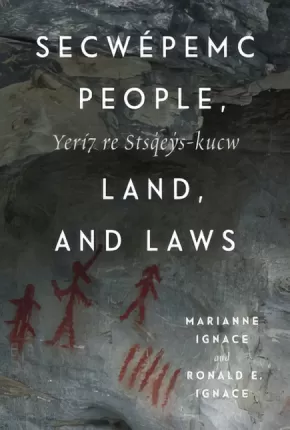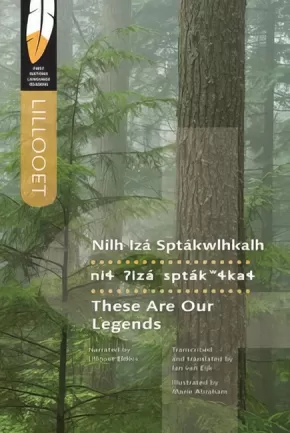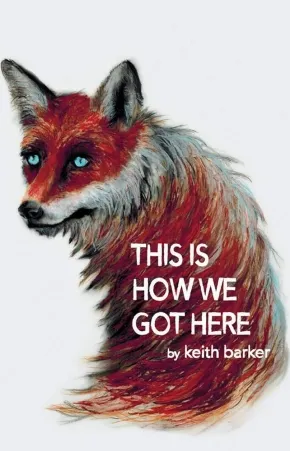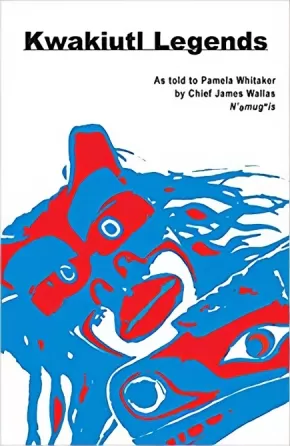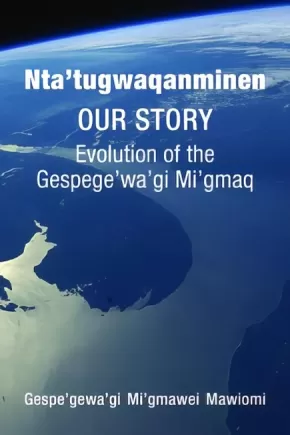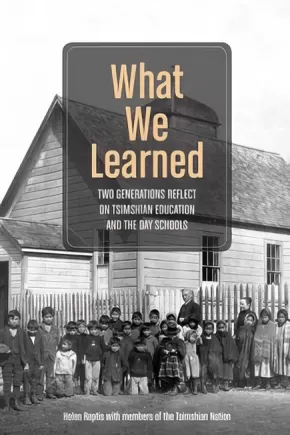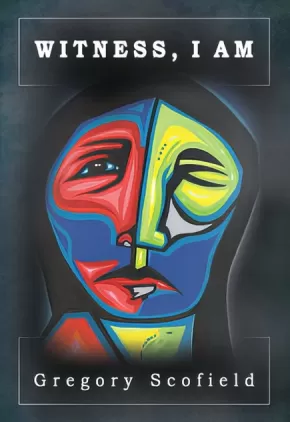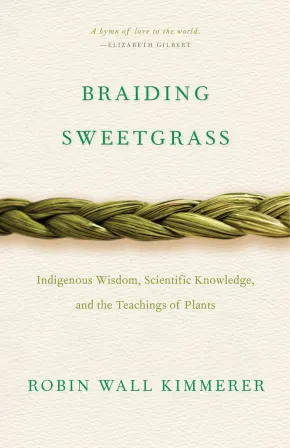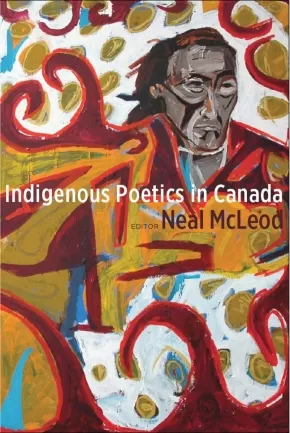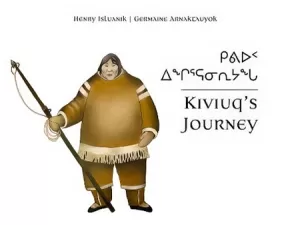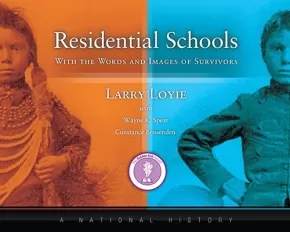
Indigenous Stories
76
-
90
of
100 Results;
Sort By
Go To
of 7
Tipiskawi Kisik: Night Sky Star Stories
$15.00
Format:
Paperback
Text Content Territories:
Indigenous Canadian; First Nations; Cree (Nehiyawak);
ISBN / Barcode: 9781927849460
Synopsis:
Synopsis:
Like the night sky above, Tipiskawi Kisik holds a myriad of tales rooted in an Ininew (Cree) perspective. An exploration of stars and constellations—and their associated mythologies—will greet you with age-old knowledge held by Indigenous people prior to European contact. Through Wilfred Buck’s creative, spiritual, and intelligent understanding of the stars, it will be easy to imagine yourself flying inside the Milky Way with Niska (the Goose) or chasing Mista Muskwa (the Great Bear), just like Tepakoop Pinesisuk (the Seven Birds). Above all, these stories can be passed on to the next generation, so they will know of the rich history, science practices, and culture of the Ininew people.
Additional Information
This is a collection of short stories (approximately 25 pages long) with supporting artwork/illustrations. While not aimed at young readers in terms of reading level, this book would support educators in their teaching of Indigenous astronomy to younger audiences, especially since each short story would work well as a read aloud and includes useful illustrations/diagrams of the night sky.
Aaniiih/Gros Ventre Stories
$24.95
Editors:
Format:
Paperback
Text Content Territories:
Indigenous American; Native American; Gros Ventres (Aaniiih);
ISBN / Barcode: 9780889774803
Synopsis:
Synopsis:
The first-ever collection of Anniiih/Gros Ventre narratives to be published in the Aaniiih/Gros Ventre language, this book contains traditional trickster tales and war stories. Some of these stories were collected by Alfred Kroeber in 1901, while others are contemporary, oral stories, told in the past few years.
As with the previous titles in the First Nations Language Readers series, Aaniiih/Gros Ventre Stories comes with a complete glossary and provides some grammar usage. Delightfully illustrated, each story is accompanied by an introduction to guide the reader through the material.
The Aaniiih/Gros Ventre people lived in the Saskatchewan area in the 1700s, before being driven south during the 1800s to the Milk River area in Montana, along the USA/Canada border.
Educator & Series Information
This book is published in the Aaniiih/Gros Ventre language. An English glossary is provided at the back of the book.
The Canadian Indigenous Books for Schools list recommends this resource for Grades 10-12 for these subjects: English Language Arts, Indigenous Language Studies, Language Studies.
Aaniiih/Gros Ventre Stories is part of the First Nations Language Readers series. With a mix of traditional and new stories, each First Nations Language Reader introduces an Indigenous language and demonstrates how each language is used today. The University of Regina Press’s long-term goal is to publish all 60+ Indigenous languages of Canada.
Additional Information
120 pages | 5.50" x 8.50" | Compiled and Edited by Terry Brockie and Andrew Cowell
Haida Eagle Treasures: Traditional Stories and Memories from a Teacher of the Tsath Lanas Clan
$24.95
Artists:
Format:
Paperback
Text Content Territories:
Indigenous Canadian; First Nations; Haida; Eagle Clan (Ts'aahl);
ISBN / Barcode: 9781550597486
Synopsis:
Synopsis:
Take a journey into the heart of Haida culture as it is lived and experienced by an extraordinary woman of the Tsath Lanas Eagle Clan. Pansy Collison, a Haida woman born and raised in Old Massett on Haida Gwaii, tells stories of her clan and community, as well as personal narratives about her history and family. Haida Eagle Treasures embodies a strong Haida woman’s voice, offering a rare glimpse inside Haida culture. Each story and memory is a treasure that captures part of the beauty of the Haida worldview and way of life.
Now retired, Pansy taught for 23 years at elementary, secondary, and college levels. From these experiences, she describes some of the challenges and contradictions of living between two worlds. Pansy’s teaching skills, artistic talents, and political affiliations keep her involved in politics and education on Haida Gwaii.
Thirteen original illustrations by Pansy’s brother, Paul White, a gifted artist, teacher, pole carver and designer, provide the guideposts within Haida Eagle Treasures.
Educator Information
Recommended in the Canadian Indigenous Books for Schools 2019-2020 resource list as being useful for grades 8-12 for English Language Arts and Social Studies.
Caution: use of the term "Native" throughout.
Additional Information
244 pages | 6.00" x 9.00" | 2nd Edition
Read, Listen, Tell: Indigenous Stories from Turtle Island
$41.99
Editors:
Format:
Paperback
Text Content Territories:
Indigenous Canadian;
ISBN / Barcode: 9781771123006
Synopsis:
Synopsis:
Read, Listen, Tell brings together an extraordinary range of Indigenous stories from across Turtle Island (North America). From short fiction to as-told-to narratives, from illustrated stories to personal essays, these stories celebrate the strength of heritage and the liveliness of innovation. Ranging in tone from humorous to defiant to triumphant, the stories explore core concepts in Indigenous literary expression, such as the relations between land, language, and community, the variety of narrative forms, and the continuities between oral and written forms of expression. Rich in insight and bold in execution, the stories proclaim the diversity, vitality, and depth of Indigenous writing.
Building on two decades of scholarly work to centre Indigenous knowledges and perspectives, the book transforms literary method while respecting and honouring Indigenous histories and peoples of these lands. It includes stories by acclaimed writers like Thomas King, Sherman Alexie, Paula Gunn Allen, and Eden Robinson, a new generation of emergent writers, and writers and storytellers who have often been excluded from the canon, such as French- and Spanish-language Indigenous authors, Indigenous authors from Mexico, Chicana/o authors, Indigenous-language authors, works in translation, and "lost" or underappreciated texts.
In a place and time when Indigenous people often have to contend with representations that marginalize or devalue their intellectual and cultural heritage, this collection is a testament to Indigenous resilience and creativity. It shows that the ways in which we read, listen, and tell play key roles in how we establish relationships with one another, and how we might share knowledges across cultures, languages, and social spaces.
Reviews
Edited by experts in Indigenous literature and contextualised beautifully, historical writers like E. Pauline Johnson are placed alongside exciting genres like Indigenous Science Fiction — illustrating the vibrancy and innovation of Indigenous storytelling across time, space and politics. If you want a primer on Indigenous cultural expressions, this is for you. If you want deft, detailed stories in Indigenous written, oral and graphic traditions, these will expand your thinking. Read, Listen, Tell will make you laugh, dream and search for more. — Niigaanwewidam Sinclair
A unique compendium that is the direct result of outstanding and painstaking scholarship, Read, Listen, Tell: Indigenous Stories from Turtle Island is an impressively informative, deftly organized, and exceptionally well presented volume that is unreservedly recommended for both community and academic library Indigenous Cultural Studies collections and supplemental reading lists. — Midwest Book Review
Read, Listen, Tell collects a brilliant and vast array of indigenous short fiction, bolstered by insightful critical essays that prioritize indigenous voices, culture, and methodologies. — Clarissa Goldsmith, Foreword Reviews, July 2017
Educator Information
• Connects Indigenous writing across colonial settler borders (of Canada, USA, and Mexico) at a time when those borders are hardening in light of security measures.
• Truth and Reconciliation Commission report highlights focus on education, prioritizing Indigenous knowledges, pedagogies, and perspectives—this book provides that.
• Provides curriculum material for new Indigenous content mandates in some provinces (Ontario, BC).
• Includes French-, Spanish-, and Indigenous-language.
• Indigenous authors (in translation).
Additional Information
410 pages | 6.00" x 9.00"
Edited by Sophie McCall, Deanna Reder, David Gaertner, and Gabrielle L'Hirondelle Hill
Secwepemc People, Land, and Laws: Yeri7 re Stsq'ey's-kucw
$49.95
Format:
Hardcover
Text Content Territories:
Indigenous Canadian; First Nations; Salish; Interior Salish; Secwepemc (Shuswap);
Grade Levels: University/College;
ISBN / Barcode: 9780773551305
Synopsis:
Synopsis:
Secwépemc People, Land, and Laws is a journey through the 10,000-year history of the Interior Plateau nation in British Columbia. Told through the lens of past and present Indigenous storytellers, this volume detail how a homeland has shaped Secwépemc existence while the Secwépemc have in turn shaped their homeland. Marianne Ignace and Ronald Ignace, with contributions from ethnobotanist Nancy Turner, archaeologist Mike Rousseau, and geographer Ken Favrholdt, compellingly weave together Secwépemc narratives about ancestors’ deeds. They demonstrate how these stories are the manifestation of Indigenous laws (stsq'ey') for social and moral conduct among humans and all sentient beings on the land, and for social and political relations within the nation and with outsiders. Breathing new life into stories about past transformations, the authors place these narratives in dialogue with written historical sources and knowledge from archaeology, ethnography, linguistics, earth science, and ethnobiology. In addition to a wealth of detail about Secwépemc land stewardship, the social and political order, and spiritual concepts and relations embedded in the Indigenous language, the book shows how between the mid-1800s and 1920s the Secwépemc people resisted devastating oppression and the theft of their land, and fought to retain political autonomy while tenaciously maintaining a connection with their homeland, ancestors, and laws. An exemplary work in collaboration, Secwépemc People, Land, and Laws points to the ways in which Indigenous laws and traditions can guide present and future social and political process among the Secwépemc and with settler society.
These Are Our Legends
$24.95
Format:
Paperback
Text Content Territories:
Indigenous Canadian; First Nations; Salish; Interior Salish; St'at'imc (Lillooet, Lil'Wat);
Grade Levels: 12; University/College;
ISBN / Barcode: 9780889773967
Synopsis:
Synopsis:
Like all First Nations languages, Lillooet (Lil'wat) is a repository for an abundantly rich oral literature. In These Are Our Legends, the fifth volume of the First Nations Language Readers series, the reader will discover seven traditional Lillooet sptakwlh (variously translated into English as "legends," "myths," or "bed-time stories.")
These texts are presented in a technical transcription that can be used by linguists, and also in a practical orthography that can be used by Lillooet speakers themselves. An English translation is also given. Basic information on the Lillooet language, its grammar, and a glossary are included in the volume.
With thanks to the Mount Currie Cultural Centre and the Tszil Publishing House.
Series Information
These Are Our Legends is part of the First Nations Language Readers series. With a mix of traditional and new stories, each First Nations Language Reader introduces an Indigenous language and demonstrates how each language is used today. The University of Regina Press’s long-term goal is to publish all 60+ Indigenous languages of Canada.
Additional Information
120 pages | 5.50" x 8.50" | Narrated by Lillooet Elders | Transcribed and Translated by Jan van Eijk
Authenticity Note: This book has been labelled as containing Authentic Indigenous Text because of the narration from Lillooet Elders. It is up to readers to determine if this text will work as an authentic resource for their purposes.
This Is How We Got Here
$17.95
Format:
Paperback
Text Content Territories:
Indigenous Canadian;
Reading Level: n/a
ISBN / Barcode: 9781770918221
Synopsis:
Synopsis:
Simultaneously heartbreaking and heartwarming, This is How We Got Here follows a close-knit family as they deal with an unexpected loss. A mother, father, aunt, and uncle must learn how to move forward after the trauma and re-learn how to interact with one another with forgiveness, humour, and love.
It’s been a year since Paul and Lucille’s son Craig died by suicide, and their once-solid family bonds are starting to break down. While the now-separated couple tries to honour their son, Lucille’s sister Liset and her husband Jim refuse to discuss their nephew. The ties that keep the four together as sisters, best friends, and spouses are strained by grief and guilt… until a visit from a fox changes everything.
Reviews
“While the material of This is How We Got Here is deep, the show didn’t leave me feeling anything dark. Instead, I was happy to have experienced the talent of everyone involved, and to have gained perspective on what I felt were honest and true reactions to the tragedy of suicide.” — Jeff Kerr, Mooney on Theatre
Additional Information
104 pages | 5.40" x 8.35" | Paperback
Kwakiutl Legends: As Told to Pamela Whitaker by Chief James Wallas
$16.95
Format:
Paperback
Text Content Territories:
Indigenous Canadian; First Nations; Kwakwaka'wakw (Kwakiutl);
ISBN / Barcode: 9780888392305
Synopsis:
Synopsis:
The stories in this book relate the traditional tales which Mr. James Wallas has learned from his elders, who lived in Quatsino Sound and on Hope Island. Mr. Wallas's forefathers are members of a people known generally as the Kwakiutl, although the term is misleading because it originally referred to a sub-group living at Fort Rupert. The Kwakiutl inhabit an area which at present includes Campbell River at the southern extreme, Quatsino Sound at the western extreme, various inlets of mainland B.C. at the eastern extreme, and Smiths Inlet at the northern extreme. Traditionally, the Kwakiutl lived in villages located in this general area (excluding Campbell River an Cape Mudge) which were organized into tribes. Today, most of them live on reserves near towns, maintaining some remote villages for food preparation and preserving during the spring, summer and fall.
Additional Information
216 pages | 5.50" x 8.50" | 11 Colour Line Drawings
Nta'tugwaqanminen: Our Story: Evolution of the Gespege'wa'gi Mi'gmaq
$19.95
Format:
Paperback
Text Content Territories:
Indigenous Canadian; First Nations; Mi'kmaq;
ISBN / Barcode: 9781552667712
Synopsis:
Synopsis:
Nta’tugwaqanminen provides evidence that the Mi’gmaq of the Gespe’gewa’gi (Northern New Brunswick and the Gaspé Peninsula) have occupied their territory since time immemorial. They were the sole occupants of it prior to European settlement and occupied it on a continuous basis. This book was written through an alliance between the Mi’gmaq of Northern Gespe’gewa’gi (Gaspé Peninsula), their Elders and a group of eminent researchers in the field with the aim of reclaiming their history, both oral and written, in the context of what is known as knowledge re-appropriation. It also provides non-Aboriginal peoples with a view of how Mi’gmaq history looks when it is written from an Indigenous perspective.
There are two voices in the book — that of the Mi’gmaq of the Gespe’gewa’gi, including the Elders, as they act as narrators of the collective history, and that of the researchers, who studied all possible aspects of this history, including advanced investigation on place names as indicators of migration patterns.
Nta’tugwaqanminen speaks of the Gespe’gewa’gi Mi’gmaq vision, history, relation to the land, past and present occupation of the territory and their place names and what they reveal in terms of ancient territorial occupation. It speaks of the treaties they agreed to with the British Crown, the respect of these treaties on the part of the Mi’gmaq people and the disrespect of them from the various levels of governments. This book speaks about the dispossession the Mi’gmaq of Gespe’gewa’gi had to endure while the European settlers illegally occupied and developed the Gaspé Peninsula to their own advantage and the rights and titles the Mi’gmaq people still have on their lands.
Author Note: The Gespe’gewa’gi Mi’gmawei Mawiomi is the organization that represents the three communities of the northern part of Gespe’gewa’gi. Research associates Richard Jeannotte and Donald Jeannotte, both Gespe’gewa’gi Mi’gmaqs, and Danielle E. Cyr, senior scholar at York University, wrote the seven first chapters. Troy Jerome, current Mi’gmawei Mawiomi Secretariat Executive Director / Nutewistoq wrote Chapter 8.
Educator Information
This book would be useful for courses in social studies, history, and English language arts. Recommended for grades 8-12, as well as college/university courses.
This book would be useful for courses in social studies, history, and English language arts. Recommended for grades 8-12, as well as college/university courses.
Table of Contents
Foreword by Satsun (Herb George)
Introduction: How We Came to Write Nta’tugwaqanminen
Our Territory in Prehistoric Times
Our Place Names
Our Creation Story and Fundamental Myths
Our Historical Presence in Gespe’gewa’gi
The Treaty Relationship Between Mi’gmaq of Gespe’gewa’gi and the British Crown
Good Faith and Dispossession
Our Constitutional Rights as Gespe’gewa’gi Mi’gmaq
The Gespe’gewa’gi Mi’gmaq in Contemporary Times
Conclusion: Our Story Continues
Notes
Bibliography
Index
Foreword by Satsun (Herb George)
Introduction: How We Came to Write Nta’tugwaqanminen
Our Territory in Prehistoric Times
Our Place Names
Our Creation Story and Fundamental Myths
Our Historical Presence in Gespe’gewa’gi
The Treaty Relationship Between Mi’gmaq of Gespe’gewa’gi and the British Crown
Good Faith and Dispossession
Our Constitutional Rights as Gespe’gewa’gi Mi’gmaq
The Gespe’gewa’gi Mi’gmaq in Contemporary Times
Conclusion: Our Story Continues
Notes
Bibliography
Index
Additional Information
320 pages | 6.00" x 9.00"
320 pages | 6.00" x 9.00"
What We Learned: Two Generations Reflect on Tsimshian Education and the Day Schools
$32.95
Format:
Paperback
Text Content Territories:
Indigenous Canadian; First Nations; Tsimshian (Ts'msysen);
Reading Level: N/A
ISBN / Barcode: 9780774830201
Synopsis:
Synopsis:
The legacy of residential schools has haunted Canadians, yet little is known about the day and public schools where most Indigenous children were sent to be educated. In What We Learned, two generations of Tsimshian students – elders born in the 1930s and 1940s and middle-aged adults born in the 1950s and 1960s – add their recollections of attending day schools in northwestern British Columbia to contemporary discussions of Indigenous schooling in Canada. Their stories also invite readers to consider traditional Indigenous views of education that conceive of learning as a lifelong experience that takes place across multiple contexts.
Reviews
"Helen Raptis has written an important book about Tsimshian educational history. It is also a book about building research relationships with Indigenous communities. It is a work that recognizes, implicitly, that Indigenous history does not run in a straight line but is more liquid and circular. The journey to understand the Indigenous past requires deft canoe navigation through riptides and crosscurrents, past colonization’s half-submerged debris. Landing on the beach, one discovers no conventional separation between past, present, and future. There are only the stories—the stories and the sacred landscape." — Michael Marker, University of British Columbia, History of Education Quarterly, Vol. 57 No. 1, February 2017
Educator Information
Helen Raptis is an associate professor in the Faculty of Education at the University of Victoria. The members of the Tsimshian Nation are Mildred Roberts, Wally Miller, Sam Lockerby, Verna Inkster, Clifford Bolton, Harvey Wing, Charlotte Guno, Don Roberts Junior, Steve Roberts, Richard Roberts, Carol Sam, and Jim Roberts
Additional Information
224 pages | 6.00" x 9.00" | Paperback
Witness, I Am
$18.95
Format:
Paperback
Text Content Territories:
Indigenous Canadian;
ISBN / Barcode: 9780889713239
Synopsis:
Synopsis:
Witness, I Am is divided into three gripping sections of new poetry from one of Canada's most recognized poets. The first part of the book, "Dangerous Sound," contains contemporary themed poems about identity and belonging, undone and rendered into modern sound poetry. "Muskrat Woman," the middle part of the book, is a breathtaking epic poem that considers the issue of missing and murdered indigenous women through the reimagining and retelling of a sacred Cree creation story. The final section of the book, "Ghost Dance," raids the autobiographical so often found in Scofield's poetry, weaving the personal and universal into a tapestry of sharp poetic luminosity. From "Killer," Scofield eerily slices the dreadful in with the exquisite: "I could, this day of proficient blooms, / take your fingers, / tie them down one by one. This one for the runaway, / this one for the joker, / this one for the sass-talker, / this one for the judge, / this one for the jury. / Oh, I could kill you."
Educator Information
Recommended for students in grades 11 and 12, or at a college/university level, for courses in creative writing, English First Peoples, English, poetry, and English language arts.
Caution: explicit coarse and sexual language.
Additional Information
96 pages | 5.50" x 8.00"
Braiding Sweetgrass: Indigenous Wisdom, Scientific Knowledge and the Teachings of Plants (PB)
$33.95
Format:
Paperback
Text Content Territories:
Indigenous Canadian; First Nations; Anishinaabeg; Potawatomi; Indigenous;
ISBN / Barcode: 9781571313560
Synopsis:
Synopsis:
As a botanist, Robin Wall Kimmerer has been trained to ask questions of nature with the tools of science. As a member of the Citizen Potawatomi Nation, she embraces the notion that plants and animals are our oldest teachers. In Braiding Sweetgrass, Kimmerer brings these two lenses of knowledge together to take us on “a journey that is every bit as mythic as it is scientific, as sacred as it is historical, as clever as it is wise” (Elizabeth Gilbert).
Drawing on her life as an indigenous scientist, and as a woman, Kimmerer shows how other living beings—asters and goldenrod, strawberries and squash, salamanders, algae, and sweetgrass—offer us gifts and lessons, even if we've forgotten how to hear their voices. In reflections that range from the creation of Turtle Island to the forces that threaten its flourishing today, she circles toward a central argument: that the awakening of ecological consciousness requires the acknowledgment and celebration of our reciprocal relationship with the rest of the living world. For only when we can hear the languages of other beings will we be capable of understanding the generosity of the earth, and learn to give our own gifts in return.
Reviews
“Robin Wall Kimmerer has written an extraordinary book, showing how the factual, objective approach of science can be enriched by the ancient knowledge of the indigenous people. It is the way she captures beauty that I love the most—the images of giant cedars and wild strawberries, a forest in the rain and a meadow of fragrant sweetgrass will stay with you long after you read the last page.”— Jane Goodall
"I give daily thanks for Robin Wall Kimmerer for being a font of endless knowledge, both mental and spiritual."— Richard Powers,New York Times
"In a world where only six percent of mammalian biomass on the planet now comprises of wild animals, I longed for books that pressed me up against the inhuman, that connected me to an inhuman world. Braiding Sweetgrass by Robin Wall Kimmerer moved me to actual tears."— Alexandra Kleeman, The Millions
"In Braiding Sweetgrass, botanist Robin Wall Kimmerer tackles everything from sustainable agriculture to pond scum as a reflection of her Potawatomi heritage, which carries a stewardship 'which could not be taken by history: the knowing that we belonged to the land.' . . . It's a book absorbed with the unfolding of the world to observant eyes—that sense of discovery that draws us in."— NPR
“With deep compassion and graceful prose, Robin Wall Kimmerer encourages readers to consider the ways that our lives and language weave through the natural world. A mesmerizing storyteller, she shares legends from her Potawatomi ancestors to illustrate the culture of gratitude in which we all should live.”—Publishers Weekly
“The gift of Robin Wall Kimmerer’s book is that she provides readers the ability to see a very common world in uncommon ways, or, rather, in ways that have been commonly held but have recently been largely discarded. She puts forth the notion that we ought to be interacting in such a way that the land should be thankful for the people.”—Minneapolis Star Tribune
“Braiding Sweetgrass is instructive poetry. Robin Wall Kimmerer has put the spiritual relationship that Chief Seattle called the ‘web of life’ into writing. Industrial societies lack the understanding of the interrelationships that bind all living things—this book fills that void. I encourage one and all to read these instructions.”— Oren Lyons, Faithkeeper, Onondaga Nation and Indigenous Environmental Leader
Additional Information
|
Indigenous Poetics in Canada
$38.99
Editors:
Format:
Paperback
Text Content Territories:
Indigenous Canadian;
Grade Levels: University/College;
ISBN / Barcode: 9781554589821
Synopsis:
Synopsis:
Indigenous Poetics in Canada broadens the way in which Indigenous poetry is examined, studied, and discussed in Canada. Breaking from the parameters of traditional English literature studies, this volume embraces a wider sense of poetics, including Indigenous oralities, languages, and understandings of place.
Featuring work by academics and poets, the book examines four elements of Indigenous poetics. First, it explores the poetics of memory: collective memory, the persistence of Indigenous poetic consciousness, and the relationships that enable the Indigenous storytelling process. The book then explores the poetics of performance: Indigenous poetics exist both in written form and in relation to an audience. Third, in an examination of the poetics of place and space, the book considers contemporary Indigenous poetry and classical Indigenous narratives. Finally, in a section on the poetics of medicine, contributors articulate the healing and restorative power of Indigenous poetry and narratives.
Awards
- 2014 ACQL Gabrielle Roy Prize for Literary Criticism winner.
Reviews
"Indigenous Poetics in Canada is that rare book of scholarship that speaks to the heart and spirit as well as the mind. The selections in this collection offer powerful individual and collective insight into the ways that diverse traditions of Indigenous poetics animate our imaginative possibilities and extend our cultural understandings across time, space, and difference. To study Indigenous poetics is to be forcefully reminded of both our historical traditions and their continuing significance, and the poets, writers, scholars, and story-makers featured in this volume are among the most eloquent and insightful voices on the topic today. This is a transformative intervention in Indigenous literary studies as well as the broader canon of Canadian literature, reminding us that questions of aesthetics are always in dynamic relationship with the lived experience of our politicized imaginations in the world."— Daniel Heath Justice (Cherokee Nation), April 2014
"Conversations about Indigenous literatures will be forever enriched by this stunning new collection. Here, the leading voices in Indigenous literary studies draw upon deep currents of inspiration—both ancient and contemporary—as they reflect upon and powerfully perform the act of re-making the world through language. Joyful, humbling, and wonderfully diverse, Indigenous Poetics in Canada welcomes readers and writers into a re-indigenized rhetorical landscape-and I cannot wait to see what takes place there.'"— Keavy Martin, April 2014
"In a fine introduction, McLeod does an admirable job of framing the essays and interviews to come while giving readers less familiar with indigenous poetics insight into some of the tropes and rhetorical strategies practitioners use, including kiskino (‘things...pointed to, but never completely articulated’), kakêskihkêmowina
(‘counselling narratives’), and aniskwâcimopicikêwin (‘the process of connecting stories together’). That this collection exists is at once a challenge to the white publishing world that has long refused to recognize indigenous poetic practices as ‘poetry’ and a testament to the health and vibrancy of the living word of indigenous consciousness.... Summing up: Highly recommended."— B. Carson, Choice, December 2014, December 2014
Educator Information
This book would be useful for the following subject areas or courses: Indigenous Studies, Poetry, Canadian Literature, and Literary Criticism.
Additional Information
416 pages | 6.00" x 9.00"
Edited by Neal McLeod.
Kiviuq's Journey
$19.95
Artists:
Format:
Paperback
Text Content Territories:
Indigenous Canadian; Inuit;
ISBN / Barcode: 9781927095805
Synopsis:
Synopsis:
Kiviuq's Journey retells the legend of Kiviuq, one of the most important and well-known legends in all of Inuit mythology, just as it as been told in the Kivalliq region of Nunavut for centuries.
Late Kivalliq-region elder Henry Isluanik lovingly retells this legend of the a lost Inuit hunter who must pass through many obstacles, using his own knowledge and quick wit to outsmart many foes, in order to find his way home.
With black-and-white line illustrations by acclaimed Inuit artist Germaine Arnaktauyok, this book is a definitive and authentic printed account of an important Inuit traditional story.
Intended for adult readers, this is a perfect selection for Inuit studies students.
Residential Schools, With the Words and Images of Survivors
$34.95
Format:
Hardcover
Text Content Territories:
Indigenous Canadian;
ISBN / Barcode: 9780993937101
Synopsis:
Synopsis:
Residential Schools, With the Words and Images of Survivors, A National History honours the survivors, the former students, who attended residential schools. Designed for the general reader this accessible, 112-page history offers a first-person perspective of the residential school system in Canada, as it shares the memories of more than 70 survivors from across Canada as well as 125 archival and contemporary images (65 black & white photographs, 51 colour, some never before published).
This essential volume written by award-winning author Larry Loyie (Cree), a survivor of St. Bernard Mission residential school in Grouard, AB, and co-authored by Constance Brissenden and Wayne K. Spear (Mohawk), reflects the ongoing commitment of this team to express the truths about residential school experiences and to honour the survivors whose voices are shared in this book.
Along with the voices, readers will be engaged by the evocative, archival photographs provided by the Shingwauk Residential Schools Centre with the assistance of curator Krista McCracken. The book begins with the moving introduction by Larry Loyie, and moves to seven chapters that explore the purpose of this school system; cultures and traditions; leaving home; life at school the half-day system; the dark side of the schools; friendship and laughter coping with a new life; changing world–the healing begins; and an afterword. A detailed, full colour map showing residential schools, timeline with key dates, glossary, and a helpful index (including names of survivors and schools) make this vital resource a must-have for secondary, college, and universities, libraries, and the general reader.
Reviews
"A broad and comprehensive review of the history of First Nations, Métis, and Inuit peoples in Canada told from the perspective of First Peoples in a very accessible way. Any educator, regardless of personal background or heritage, would find this timely resource very useful in any classroom." — Gary Fenn and Domenic Bellissimo, executive assistants, Ontario Secondary School Teachers’ Federation
"Written with a gentle hand, this book describes a history that few Canadians understand or even know about. From the first page, those in search of the truth are engaged in a journey of learning, as they come to understand the true battle of Aboriginal peoples to preserve their cultures and pride. This story is a true account of resiliency and human spirit." — Tracy Zweifel, executive director, Sagitawa Friendship Society, Alberta
Awards
- 2016 Winner of Golden Oak award in Ontario's Forest of Reading program
Educator Information
This must-have resource includes a detailed, full-colour map showing residential schools, a timeline with key dates, and a glossary.
Recommended for grades 7-12, but would still be useful for adults and college/university courses studying residential schools and Indigenous history.
This book has been evaluated and approved by ERAC (Educational Resource Acquisition Consortium, British Columbia).
Additional Information
112 pages | 10.43" x 8.26"
Sort By
Go To
of 7

